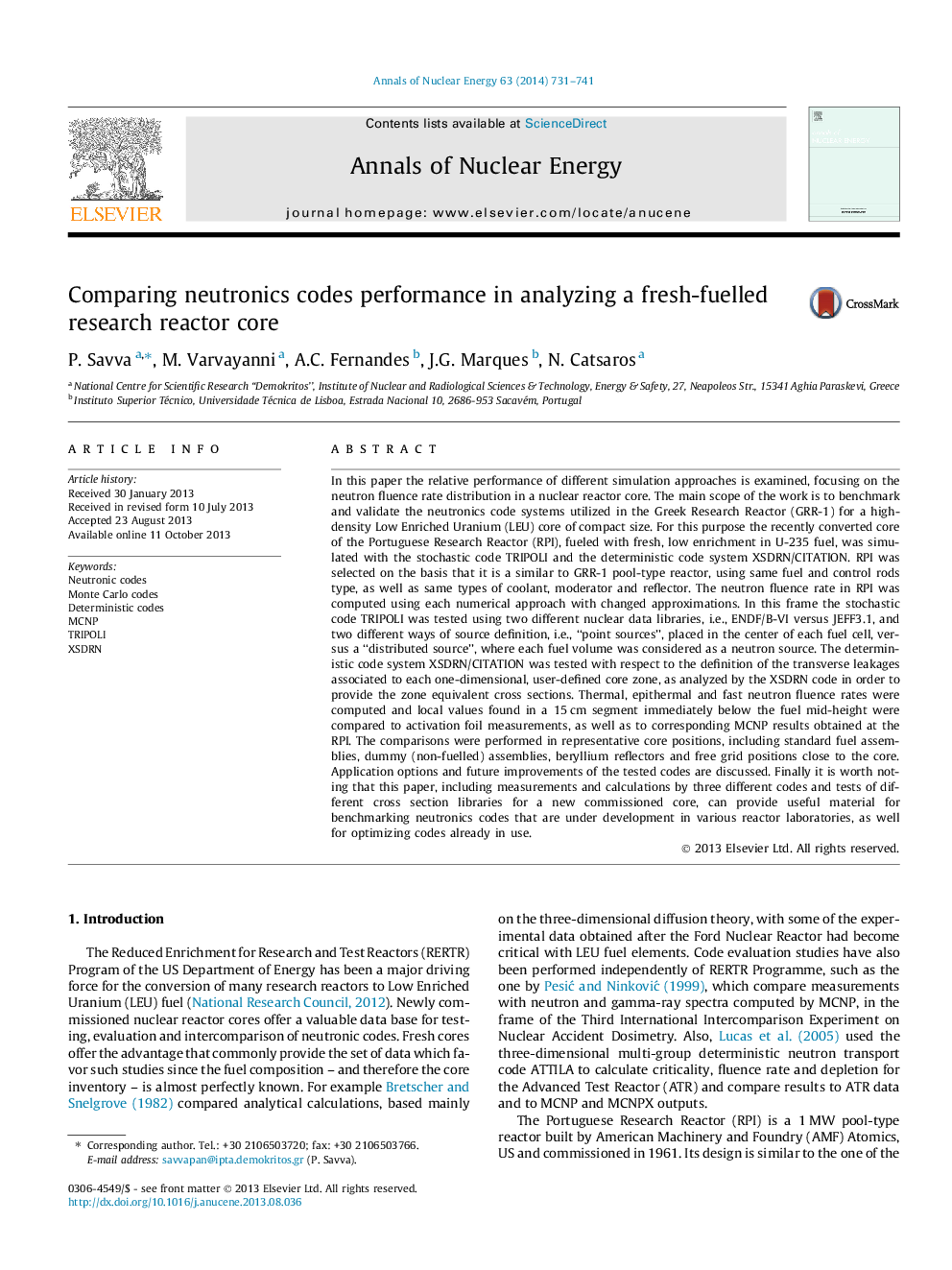| Article ID | Journal | Published Year | Pages | File Type |
|---|---|---|---|---|
| 8069793 | Annals of Nuclear Energy | 2014 | 11 Pages |
Abstract
In this paper the relative performance of different simulation approaches is examined, focusing on the neutron fluence rate distribution in a nuclear reactor core. The main scope of the work is to benchmark and validate the neutronics code systems utilized in the Greek Research Reactor (GRR-1) for a high-density Low Enriched Uranium (LEU) core of compact size. For this purpose the recently converted core of the Portuguese Research Reactor (RPI), fueled with fresh, low enrichment in U-235 fuel, was simulated with the stochastic code TRIPOLI and the deterministic code system XSDRN/CITATION. RPI was selected on the basis that it is a similar to GRR-1 pool-type reactor, using same fuel and control rods type, as well as same types of coolant, moderator and reflector. The neutron fluence rate in RPI was computed using each numerical approach with changed approximations. In this frame the stochastic code TRIPOLI was tested using two different nuclear data libraries, i.e., ENDF/B-VI versus JEFF3.1, and two different ways of source definition, i.e., “point sources”, placed in the center of each fuel cell, versus a “distributed source”, where each fuel volume was considered as a neutron source. The deterministic code system XSDRN/CITATION was tested with respect to the definition of the transverse leakages associated to each one-dimensional, user-defined core zone, as analyzed by the XSDRN code in order to provide the zone equivalent cross sections. Thermal, epithermal and fast neutron fluence rates were computed and local values found in a 15Â cm segment immediately below the fuel mid-height were compared to activation foil measurements, as well as to corresponding MCNP results obtained at the RPI. The comparisons were performed in representative core positions, including standard fuel assemblies, dummy (non-fuelled) assemblies, beryllium reflectors and free grid positions close to the core. Application options and future improvements of the tested codes are discussed. Finally it is worth noting that this paper, including measurements and calculations by three different codes and tests of different cross section libraries for a new commissioned core, can provide useful material for benchmarking neutronics codes that are under development in various reactor laboratories, as well for optimizing codes already in use.
Keywords
Related Topics
Physical Sciences and Engineering
Energy
Energy Engineering and Power Technology
Authors
P. Savva, M. Varvayanni, A.C. Fernandes, J.G. Marques, N. Catsaros,
